As hearing aid technology develops and continues to improve over time, so do the accessories that offer better clarity and compatibility with everyday technology such as cell phones and listening to the radio in your car. Ask your audiologist about the availability of accessories that can help offer you compatibility with Blue Tooth technology. Ask about better clarity…inquire about adapters and hearing loops with telecoil technology that can help you get the most out of life, everywhere you go. Life is Hi Tech and just because you wear a hearing doesn’t mean you can’t be too. Below are some newer technological options that can help you enjoy a life that is more carefree:
This is an example of how to connect a BAHA (bone anchored hearing aid or osteo-integrated bone conduction processor) to a cellphone (mobile) in order to be hands free while driving. A Jabra Clipper was utilized as the Bluetooth connector in the below image. Thank you to our support group member, Mark De Klerk, for sharing this with all of us.
The “Esteem” by Envoy Medical
“I was born deaf and 8 weeks ago I received a hearing implant. This is the video of them turning it on and me hearing myself for the first time 🙂 Edit: For those of you who have asked the implant I received was Esteem offered by Envoy Medical. Note: The “Esteem” may not be an option for all individuals with mixed hearing loss, sensorineural hearing loss or bone conductive hearing loss. For more information on the “Esteem,” please speak directly with your ENT. Check out my blog:http://sarahchurman.blogspot.com/ Sarah Churman.”
Vibrant SoundBridge by Med El
There is another device available called the The Vibrant Soundbridge Middle Ear Implant System. This system is an alternative to conventional hearing devices. It is designed for individuals who have been diagnosed with mild to severe sensory neural hearing loss or conductive and mixed hearing losses and is an option to canalplasty and the traditional implantable BAHA.
The technology of the Vibrant Soundbridge bypasses the outer ear in order to directly stimulate middle ear structures. The system consists of an internal and an external component.
The Vibrant Soundbridge, by Med-el. For more information about the Vibrant Soundbridge and Med-el please click on the following link: www.medel.com
Below are two white papers (research) abstracts that have been written on the theory and success of the Vibrant Soundbridge system for loved ones having Aural Atresia. The Vibrant Soundbridge system allows an individual born without a middle ear canal to be able to hear with this implantable option. For the complete abstracts, you have to order them through Medline…sorry, I cannot re-post the articles …they must be ordered.
Abstract 1
Application of the Vibrant Soundbridge in bilateral congenital atresia in toddlers.
Frenzel H, Hanke F, Beltrame M, Wollenberg B.
Source
Department of Otorhinolaryngology and Plastic Operations, University Hospital Schleswig-Holstein, Lübeck, Germany. henning.frenzel@uk-sh.de
Abstract
CONCLUSION:
The Vibrant Soundbridge offers an excellent audiologic rehabilitation for toddlers with microtia and atresia. It provides direct stimulation of the cochlea and straightforward adaption to the given anatomical structures. The ‘posterior atresia incision’ preserves the physical integrity of the tissue layers around the ear remnant, which is essential for an aesthetic auricular reconstruction.
OBJECTIVES:
Patients with bilateral aural atresia require immediate auditory stimulation to ensure normal speech development. We present an operative technique that allows safe restoration of hearing before aesthetic reconstruction.
METHODS:
A 6-year-old boy presented with bilateral microtia and osseous atresia. A hairline incision was performed through all layers and was followed by a subperiostal preparation towards the atresia plane. The fused malleus-incus-complex was removed and the transducer was crimped to the stapes suprastructure on both sides.
RESULTS:
Speech performance is nearly normal in both quiet and noise conditions. The surgery did not affect the tissues that are important for the later ear reconstruction.
PMID:
20105105
[PubMed – indexed for MEDLINE]
Abstract II
Laryngoscope. 2009 Jan;119(1):67-74.
Application of the Vibrant Soundbridge to unilateral osseous atresia cases.
Frenzel H, Hanke F, Beltrame M, Steffen A, Schönweiler R, Wollenberg B.
Source
Department of Otorhinolaryngology, University Hospital Schleswig-Holstein, Lübeck, Germany.
Abstract
OBJECTIVES/HYPOTHESIS:
Patients with high-grade atresia-microtia suffer from a combined malformation of the outer and middle ears, typically leading to a severe hearing impairment. Long-term results of middle ear reconstruction with tympanoplasty are often insufficient due to persistent air-bone gaps, and new techniques in hearing rehabilitation are required. The objective of this research is to evaluate the active middle ear implant, the Vibrant Soundbridge (VSB), for hearing rehabilitation of patients with unilateral osseous aural atresia.
STUDY DESIGN:
Prospective analysis of a consecutive cohort of seven atresia patients (mean age = 15 years).
METHODS:
During plastic auricular reconstruction of unilateral atresia-microtia cases, an access through the bony atresia plate was drilled. The floating mass transducer was coupled to the stapes (or remaining stapes suprastructure), ossicular chain, or round window, depending on the anatomic needs of the patient. Audiometric testing, including pure-tone thresholds, and speech testing in quiet and noise were performed.
RESULTS:
: The mean threshold with the VSB activated in the free field warble tone audiometry was 23.8 dB hearing level (HL). Mean functional gain was 45.5 dB HL. Mean aided free field speech discrimination in quiet was 64% at 50 dB, 99% at 65 dB, and 100% at 80 dB.
CONCLUSIONS:
By circumventing the malformed middle ear and directly stimulating the cochlea, the VSB provides a new rehabilitation option for atresia patients. We conclude that the procedure is safe and effective and can be implemented in combination with outer ear reconstruction.
PMID:
19117311
[PubMed – indexed for MEDLINE]
Below are the opinions of the Vibrant Soundbridge system from two canalplasty expert surgeons from the United States:
“Yes, the Vibrant Soundbridge is a relatively newer option for Atresia patients and can be placed in their ears, albeit in a couple different ways. I have seen the case reports as well as the case series, along with another case series by Vittorio Colletti in Italy presented at a recent national meeting. My colleague at UNC-Chapel Hill has also put one in. The floating mass transducer can go on an ossicle or can be placed in the round window niche depending on the anatomy of the middle ear. The real question will be long-term results – will the implant stay in place and continue to provide good hearing over time? It is approved in this US, but many insurance companies consider it a “hearing aid” and do not cover the costs, which can be quite prohibitive. I personally have not placed any of these implants. Time will tell if this will be a successful long-term option for Atresia patients.”
“I know this device well. I have been a consultant for MedEl and have been an organizer for their European conferences on the subject. I also have presented to the FDA about getting approval in the USA which is not going to be anytime soon it appears. I am preparing a post to our website which will be up shortly, but this device has some promise but is very early in its use. There are less than a handful of devices in use in patients under 10 years of age with the youngest receiving bilateral devices in Germany two weeks ago (not turned on yet). I think it should be viewed as experimental with some promise. There are also problems with it that give me serious concern as well.”
The Vibrant Soundbridge is approved in countries such as the US and Australia.
Information on the above medical abstracts and the Vibrant Soundbridge system were sent to me by one of our group members. Thank you Javier!
BoneBridge by Med El
Med El introduces the world’s first active bone conduction implant – the BONEBRIDGE™. With the Bonebridge, MED-EL complements its family of hearing implants and now offers the widest product range of hearing implants worldwide. This pioneering bone conduction implant enables sound transmission directly to the inner ear by means of bone conduction. It is a suitable solution for people, in whom sound cannot be transferred to the inner ear via the natural path of hearing through the outer and the middle ear.
The Bonebridge is a semi-implantable hearing system, in which the implant is positioned completely under the skin. The implant receives the signals from an external audio processor, which is worn comfortably under the hair.
With the Amadé BB audio processor, the Bonebridge features the latest signal processing technology for improved auditory experience. As the audio processor can be renewed, the Bonebridge system can also be upgraded with state-of-the-art technologies, even many years after the implant surgery.
http://www.medel.com/us/
Contact Mini by BHM Tech
There is also another bone conduction hearing aid called the “Contact Mini” made by BHM Tech, an Austrian company.
The contact mini is a full programmable bone conductive hearing system. The innovative design consisting of an electronic housing and a miniature-receiver enables the integration into different headpieces like hair circlet, headband and caps. These capabilities enable maximum wearing-comfort and manifold application possibilities.
The contact mini is designed for the treatment of babies, children and adults. It is an excellent, none-surgery solution for congenital deformities of the ear like Microtia and Atresia Auris where hearing with bone conduction for sound transmission is of utmost priority to enable regular speech-development. The experiences in the market show that also adults can be treated very successful by using the contact mini on a hair circlet, in a baseball-cap and for sports in a headband.
For more information on the “Contact Mini” and about BHM Tech, please click on the link below:
http://www.bhm-tech.at/
Trans Ear
TransEar is an elegant, affordable, and effective answer to SSD. It looks like a conventional BTE (Behind-the Ear) hearing aid, but instead of simply amplifying sound, it relies on bone conduction to transmit the sound to the better ear.
TransEar is not the first bone conduction hearing aid, but it is the first to overcome Single Sided Deafness
- without surgery;
- without bulky headbands;
- without having to wear another hearing aid in the “good” ear
P.O. Box 1516
Johnson City, TN 37605
Ph: 1-888-382-9327
For Outside of North America 423-928-9060
E-mail: info@transear.com
http://www.transear.com/
Red Cat by Lightspeed
The “Red Cat” by Lightspeed…They said it couldn’t be done: an all-in-one, single speaker, no installation system that could fill a classroom with clear, even sound so that every child hears every word. But REDCAT does it. Proven in classrooms worldwide, the revolutionary REDCAT is saving schools money and improving teacher-student classroom communication.
So, if you are trying to decide between a BAHA or an FM system, take a look at the option for an in classroom sound system with speakers. This can be a very helpful system if your child’s school will fund it. Thank you to our group member, Lanine, for telling us about this helpful system.
For more details, please visit the link below:
https://www.lightspeed-tek.com/default.aspx?id=186&&AspxAutoDetectCookieSupport=1
or visit http://www.lightspeed-tek.com/
Articles
Hearing Loops and Telecoil Technology
“A Hearing Aid That Cuts Out All the Clatter”
Photographed by: Béatrice de Géa for The New York Times
The composer Richard Einhorn had despaired of truly enjoying a concert or Broadway show before encountering a hearing loop.
By JOHN TIERNEY, NY Times
Published: October 23, 2011
After he lost much of his hearing last year at age 57, the composer Richard Einhorn despaired of ever really enjoying a concert or musical again. Even using special headsets supplied by the Metropolitan Opera and Broadway theaters, he found himself frustrated by the sound quality, static and interference.
Michael Kamber for The New York Times
Hearing loops are being placed in subway fare booths in New York in what will be the largest installation in the United States.
Then, in June, he went to the Kennedy Center in Washington, where his “Voices of Light” oratorio had once been performed with the National Symphony Orchestra, for a performance of the musical “Wicked.”
There were no special headphones. This time, the words and music were transmitted to a wireless receiver in Mr. Einhorn’s hearing aid using a technology that is just starting to make its way into public places in America: a hearing loop.
“There I was at ‘Wicked’ weeping uncontrollably — and I don’t even like musicals,” he said. “For the first time since I lost most of my hearing, live music was perfectly clear, perfectly clean and incredibly rich.”
His reaction is a common one. The technology, which has been widely adopted in Northern Europe, has the potential to transform the lives of tens of millions of Americans, according to national advocacy groups. As loops are installed in stores, banks, museums, subway stations and other public spaces, people who have felt excluded are suddenly back in the conversation.
A hearing loop, typically installed on the floor around the periphery of a room, is a thin strand of copper wire radiating electromagnetic signals that can be picked up by a tiny receiver already built into most hearing aids and cochlear implants. When the receiver is turned on, the hearing aid receives only the sounds coming directly from a microphone, not the background cacophony.
“It’s the equivalent of a wheelchair ramp for people who used to be socially isolated because of their hearing loss,” said David G. Myers, a professor of psychology at Hope College in Holland, Mich., who is hard of hearing. “I used to detest my hearing aids, but now that they serve this second purpose, I love the way they’ve enriched my life.”
After his first encounter with a hearing loop at an abbey in Scotland, where he was shocked to suddenly be able to understand every word of a service, Dr. Myers installed a loop in his own home and successfully campaigned to have loops installed at hundreds of places in Michigan, including the Grand Rapids airport and the basketball arena at Michigan State University.
“One of the beauties of this simple technology is that it serves me everywhere from my office to my home TV room to nearly all the worship places and public auditoriums of my community,” Dr. Myers said.
The Midwest has been in the vanguard, but New York is starting to catch up. Loops have been installed at the ticket windows of Yankee Stadium and Citi Field, at the Apple store in SoHo and at exhibits and information kiosks at Ellis Island, the Metropolitan Museum of Art and the American Museum of Natural History.
Even in that infamous black hole of acoustics — the New York subway system — loops are being placed in about 500 fare booths, in what will be the largest installation in the United States.
“This isn’t just about disability rights — it’s about good customer service,” said Janice Schacter Lintz, the head of the Hearing Access Program, a group in New York promoting the loops.
“The baby boomers turn 65 this year,” Ms. Schacter Lintz said, noting that more than 30 percent of people over 65 have hearing loss. “That’s a big group of customers who won’t go to museums or theaters or restaurants where they can’t hear. Put in a loop, and they can hear clearly without any of the bother or embarrassment of wearing a special headset.”
The basic technology, called an induction loop, has been around for decades as a means of relaying signals from a telephone to a tiny receiver called a telecoil, or t-coil, that can be attached to a hearing aid. As telecoils became standard parts of hearing aids in Britain and Scandinavia, they were also used to receive signals from loops connected to microphones in halls, stores, taxicabs and a host of other places.
People in the United States have been slower to adopt the technology because telecoils were traditionally sold as an optional accessory, at an extra cost of about $50, instead of being included automatically with a hearing aid. But today telecoils are built into two-thirds of the hearing aids on the market as well as in all cochlear implants, so there is a growing number of people able to benefit from loops.
Hearing loop systems are more complicated to install than the assistive-hearing systems commonly used in theaters and churches, which beam infrared or FM signals to special headsets or neck loops that must be borrowed from the hall. Installing a loop in an auditorium typically costs $10 to $25 per seat, an initial investment that discourages some facility managers. But advocates for the loops argue that the cost per user is lower over the long run.
“The joke among my friends is that the loop system sounds too good to be true, but it is,” said Christine Klessig, a retired lawyer living near Stevens Point in central Wisconsin. “Before they installed a loop at the public library, I had to sit in the front row at lectures and try to lip-read because I missed so many words. Now I sit wherever I want and hear everything.”
The Hearing Loss Association of America, the largest group representing people with hearing problems, has joined with the American Academy of Audiology in a campaign to make loops more common in the United States. The technology is a cost-efficient way to provide benefits that even the most expensive hearing aids cannot deliver, said Patricia Kricos, an audiologist at the University of Florida and a past president of the American Academy of Audiology.
“Audiologists have always had a lot of faith in new high-tech hearing aids and cochlear implants, which are wonderful, but we’re coming to realize that these work primarily in relatively quiet places without a lot of reverberation and noise,” Dr. Kricos said. “In many settings, like a train station, they can’t give you the crystal-clear clarity that you can get from a hearing loop.”
In the pre-loop days at Dr. Myers’s church in Michigan, the assistive-hearing headsets were rarely used by more than a single person at any service. Other worshipers were dissuaded by the inconvenience and embarrassment, he said. Shortly after the loop was installed, 10 people told him they were using it, and the number has been growing as more people get hearing aids that work with the system.
“If we build it, they will come,” Dr. Myers said. “I see no reason why what’s happened here in West Michigan can’t happen across America.”
This article has been revised to reflect the following correction:
Correction: October 26, 2011
An article on Monday about hearing loop technology, which eliminates background noise for wearers of hearing aids, misstated the name of an oratorio by the composer Richard Einhorn, who lost most of his hearing at age 57. It is “Voices of Light,” not “Voice of Light.” A version of this article appeared in print on October 24, 2011, on page A14 of the New York edition with the headline: A Hearing Aid That Cuts Out All the Clatter.
The link to this article can be found at: http://www.nytimes.com/2011/10/24/science/24loops.html
“In the Loop – Helping the Growing Population with Hearing Loss”
By David G. Myers, PhD, & Juliette Sterkens, AuD
An article discussing “loop hearing” through the use of telecoil technology. Apparently, affective October 2010, Michigan State University’s Breslin Center arena added hearing loop coverage of 12,200 of its 14,759 seats (excluding bleachers) for basketball and special events.
http://hearingloop.org/SoundCommunicationsArticle_2010.pdf?mid=5191623
The Bionic Ear
Scientists at Princeton University used off-the-shelf printing tools to create a functional ear that can “hear” radio frequencies far beyond the range of normal human capability.
The researchers’ primary purpose was to explore an efficient and versatile means to merge electronics with tissue. The scientists used 3D printing of cells and nanoparticles followed by cell culture to combine a small coil antenna with cartilage, creating what they term a bionic ear.
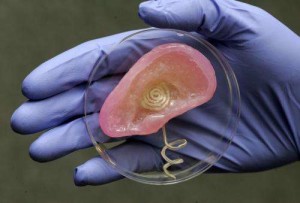
Scientists used 3-D printing to merge tissue and an antenna capable of receiving radio signals. Credit: Frank Wojciechowski
Read more at: http://phys.org/news/2013-05-printable-bionic-ear-melds-electronics.html#jCp
“In general, there are mechanical and thermal challenges with interfacing electronic materials with biological materials,” said Michael McAlpine, an assistant professor of mechanical and aerospace engineering at Princeton and the lead researcher. “Previously, researchers have suggested some strategies to tailor the electronics so that this merger is less awkward. That typically happens between a 2D sheet of electronics and a surface of the tissue. However, our work suggests a new approach—to build and grow the biology up with the electronics synergistically and in a 3D interwoven format.”
McAlpine’s team has made several advances in recent years involving the use of small-scale medical sensors and antenna. Last year, a research effort led by McAlpine and Naveen Verma, an assistant professor of electrical engineering, and Fio Omenetto of Tufts University, resulted in the development of a “tattoo” made up of a biological sensor and antenna that can be affixed to the surface of a tooth.
This project, however, is the team’s first effort to create a fully functional organ: one that not only replicates a human ability, but extends it using embedded electronics
“The design and implementation of bionic organs and devices that enhance human capabilities, known as cybernetics, has been an area of increasing scientific interest,” the researchers wrote in the article which appears in the scholarly journal Nano Letters. “This field has the potential to generate customized replacement parts for the human body, or even create organs containing capabilities beyond what human biology ordinarily provides.”
Read more at: http://phys.org/news/2013-05-printable-bionic-ear-melds-electronics.html#jCp
Videos
This is a video of a young girl named Sarah who is hearing through her BAHA for the first time in her life following implantable BAHA (bone anchored hearing aid) surgery.
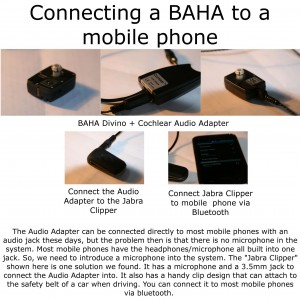
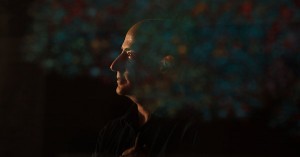




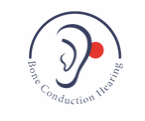


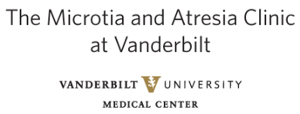
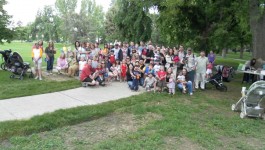
Leave a Comment
You must be logged in to post a comment.